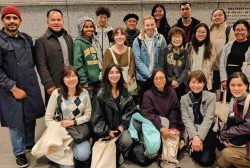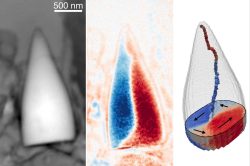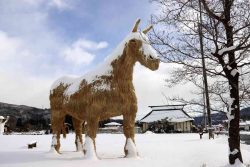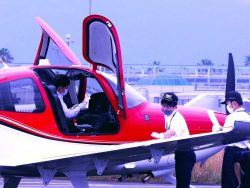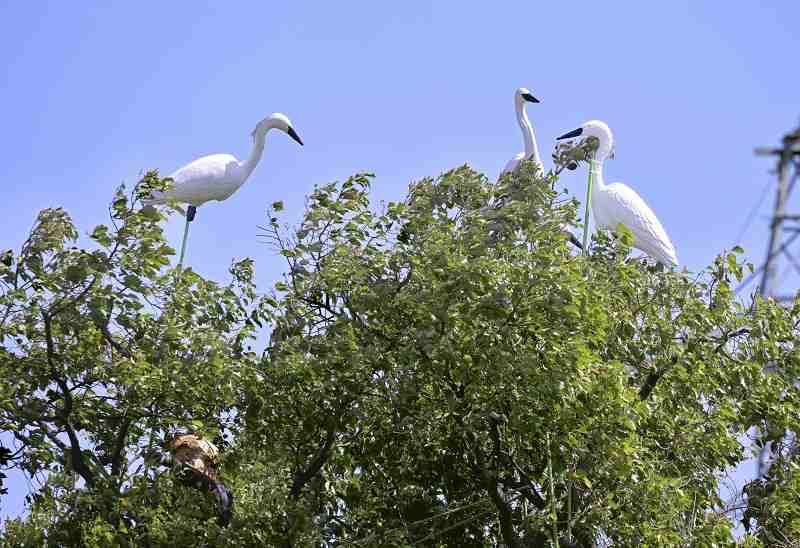
A worker installs decoy herons on camphor trees at the Yatomi Interchange on the Higashi-Meihan Expressway in Yatomi, Aichi Prefecture. Photos taken between Feb. 21 and April 21
20:40 JST, June 1, 2021
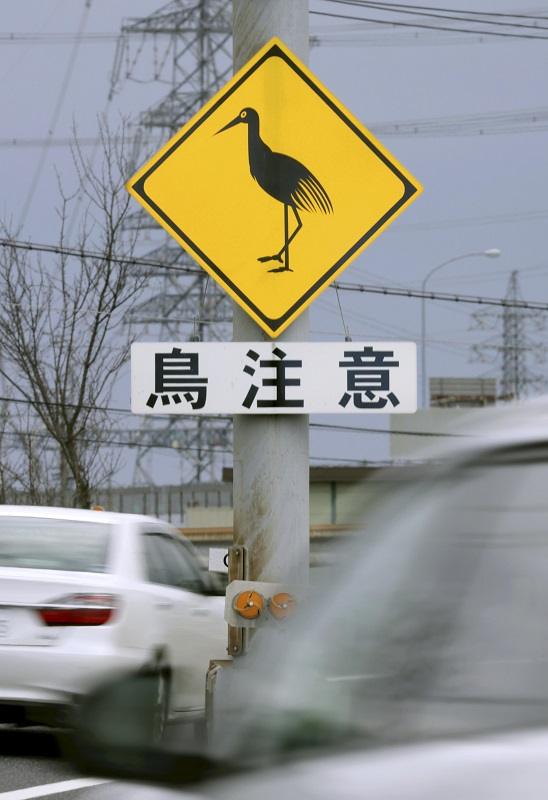
A sign telling drivers to watch out for herons is seen at the entrance to the Yatomi Interchange.
Strangely stiff white herons have emerged around treetops near the Higashi-Meihan Expressway in Yatomi, Aichi Prefecture.
A specialist used to working at heights who has experience pruning trees was seen placing these decoy herons in a man-made grove of trees, many over 10 meters tall, inside the loop of the Yatomi Interchange.
Speakers were also set up on the ground to play the bird’s call.
This interchange and the Kanie Interchange about 5 kilometers away in the town of Kanie, Aichi Prefecture, used to be nesting sites for colonies of several thousand herons.
But the last time the birds were seen nesting at Yatomi was in 2016. For some reason, the herons congregated at Kanie, making it overcrowded.
Expressway operator Central Nippon Expressway Co. and the Aichi prefectural branch of the Wild Bird Society of Japan have been working to move some of the herons to Yatomi.
Many herons used to nest in colonies in the countryside of satoyama areas where woodlands meet cultivated fields. But since the 1980s, the rapid building of housing and other development projects have deprived the birds of their nesting sites. The birds then began nesting in trees around interchanges, where they meet few natural predators and are not bothered by humans.
Initially, the herons were seen as a nuisance because of their droppings and collisions with vehicles on the expressway. Central Nippon Expressway then heightened fences and posted warning signs to reduce accidents.
Since 2010, the expressway operator, in cooperation with the Wild Bird Society and other organizations, has been working to realize the idea of a symbiotic relationship between herons and the expressway.
After the colony disappeared from Yatomi, there were some months when more than 5,000 herons gathered at Kanie. Since the idea of a symbiotic relationship cannot work if such congestion continues, the company has tried various ways to make some birds move to Yatomi.
Using only decoys and artificial nests have failed to attract the herons, so this year a speaker has been set up to project the bird’s call to let the herons know it is a safe place to live.
“We hope this year’s experiment succeeds,” said Tetsuya Nozawa, deputy director of the prefectural branch of the Wild Bird Society of Japan, “and we can discover clues to solving problems between wild birds and humans that are taking place around the nation.”
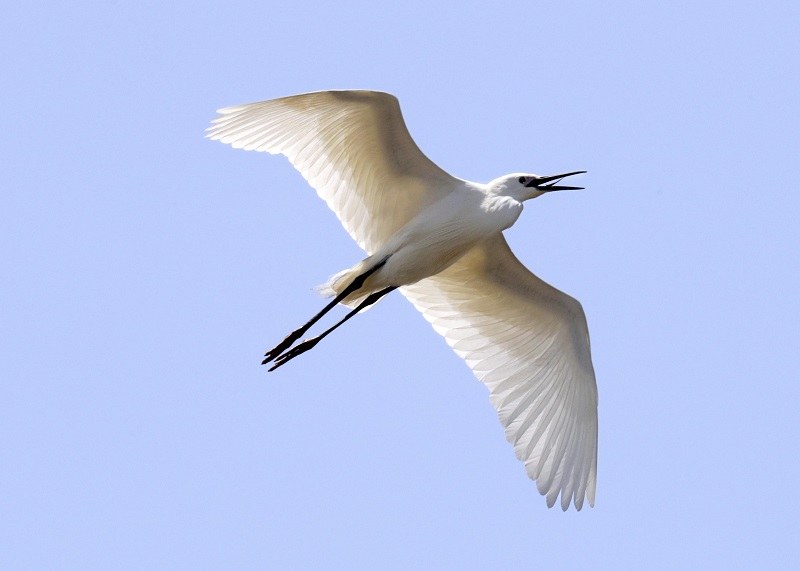
A little egret flies above the Kanie Interchange.
"Society" POPULAR ARTICLE
-

Tokyo’s Off Limit Areas Becoming Popular for Tours
-

Fire Damages 170 Buildings in Oita, Western Japan
-

Tatsuya Nakadai, Japanese Actor, Dies at 92; Appeared in Films Including “The Human Condition” and “Ran” (UPDATE 1)
-

M5.7 Earthquake Hits Japan’s Kumamoto Pref., Measuring Upper 5 Intensity, No Tsunami Expected
-

No Easy Fix for Tokyo’s Soaring Real Estate Prices
JN ACCESS RANKING
-

Govt Plans to Urge Municipalities to Help Residents Cope with Rising Prices
-

Japan Resumes Scallop Exports to China
-

Japan Prime Minister Takaichi Vows to Have Country Exit Deflation, Closely Monitor Economic Indicators
-

Japan to Charge Foreigners More for Residence Permits, Looking to Align with Western Countries
-

Japan GDP Down Annualized 1.8% in July-Sept.




